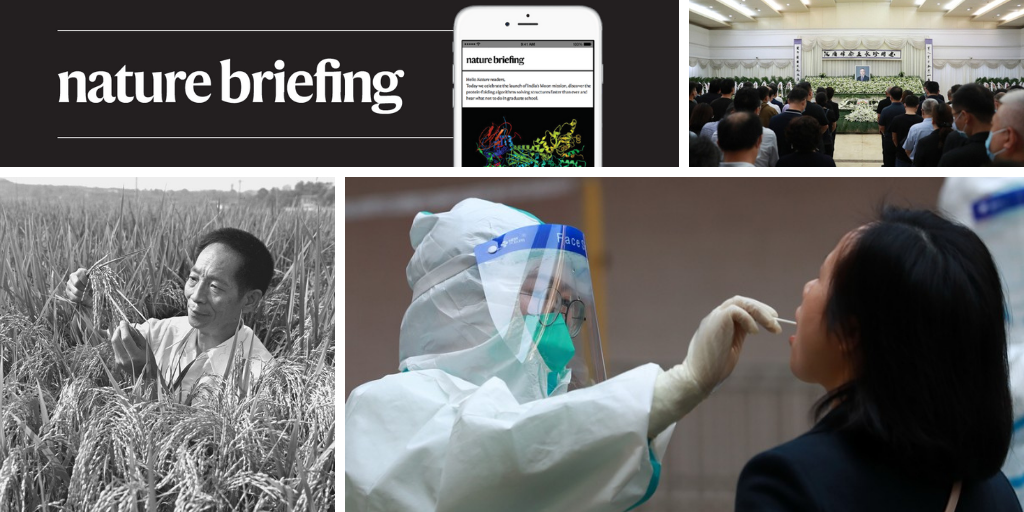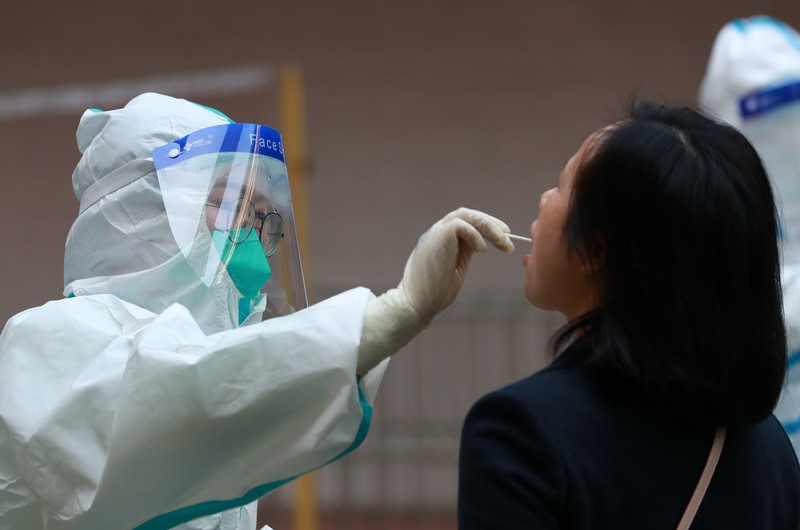Hello Nature readers, would you like to get this Briefing in your inbox free every day? Sign up here.
Partial genome sequences recovered from a deleted entry in a US government database have shed light on the genetic diversity of SARS-CoV-2 in Wuhan, China, early in the epidemic. Viral evolutionary geneticist Jesse Bloom discovered the sequences in cloud-based archives of the database. The recovered data add to a growing body of evidence that the first human cases of COVID-19 were not associated with the city’s seafood market. The data do not reveal the virus’s origins, only that the market looks less likely to be where SARS-CoV-2 first jumped from animals to people.It is not fully clear why researchers at Wuhan University asked for the sequences to be removed from the Sequence Read Archive, a repository for raw sequencing data maintained by an arm of the US National Institutes of Health (NIH). In a statement, the NIH said it removed the data at the request of the researchers, who said they planned to submit them to another database.
Reference: bioRxiv preprint
The killing of a maths faculty member on a Shanghai campus has stirred up debate over the onerous tenure process. The motive behind the fatal stabbing remains unknown, but some researchers have suggested that the statistician charged in connection to the death faced a precarious employment situation. China has a similar tenure-track system to the United States, but a much smaller fraction of academics successfully achieve permanent employment. Researchers say that, at some universities, over-recruitment, pressure to publish and cronyism pile stress on early-career academics.
In the past decade, a mere eight human fossils unearthed in the Denisova Cave in southern Siberia have rewritten the human story, from the tiny finger bone that revealed the extinct human Denisovans, to the discovery of a first-generation Neanderthal–Denisovan hybrid. Now a study of DNA in the cave’s soil reveals the complex history of human and animal habitation there. Hundreds of soil samples show a cycle of inhabitants, starting with Denisovans about 300,000 years ago. Different groups of Denisovans and Neanderthals left their marks on the cave, and modern humans appeared about 45,000 years ago. “I cannot think of another site where three human species lived through time,” says archaeological scientist Katerina Douka.
Read more: Lead researcher Elena Zavala tells the suspenseful first-hand tale of the discovery in an essay for the Nature Ecology & Evolution Community blog.
Features & opinion
Yuan Longping was the ‘father of hybrid rice’, leading the development of the higher-yielding crop against the backdrop of a turbulent century. Deeply influenced by the horrors of the famine that followed the Great Leap Forward (1958–60), Yuan tackled the difficult hybridization of China’s most important staple crop. In 1999, it was estimated that the production increases brought about by hybrid rice fed an additional 100 million people in China each year. Despite political persecution and enormous sacrifices — one year he spent just a day with his family — Yuan’s vocation was agriculture until his final days, writes historian Shellen Wu. He died on 22 May, aged 90.
Researchers have isolated a molecule in birds’ eyes that might act as a compass thanks to a quantum-mechanical mechanism called ‘radical pairs’. The idea is that a light-sensitive molecule called a cryptochrome absorbs light and produces a pair of electrons. The quantum-mechanical spins of those electrons are influenced by Earth’s magnetic field, showing the bird the way. Researchers have shown that the cryptochrome protein does appear to respond to magnetism. They also compared cryptochromes from the eyes of migratory European robins (Erithacus rubecula) with those from homebody chickens (Gallus gallus). The proteins from the roaming robins were substantially more magnetically sensitive than were the chickens’. The finding brings us a step closer to the “holy grail” of sensory biology, says zoologist Eric Warrant. “We have eyes for vision, we have ears for hearing, but we have no organ that we know of that’s involved in magnetoreception… it’s the last sense we effectively know nothing about.”
Nature Podcast | 28 min listen
Subscribe to the Nature Podcast on Apple Podcasts, Google Podcasts or Spotify.






More News
Could bird flu in cows lead to a human outbreak? Slow response worries scientists
US halts funding to controversial virus-hunting group: what researchers think
How high-fat diets feed breast cancer